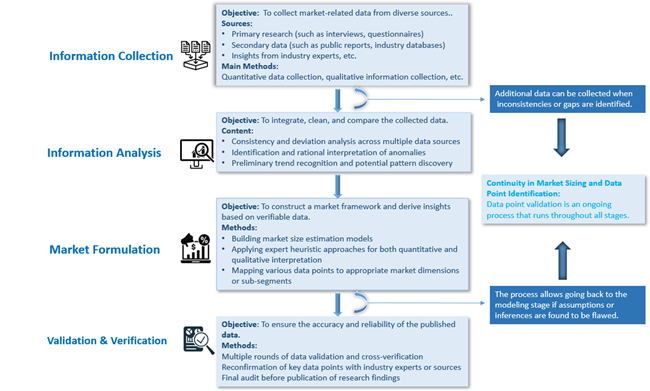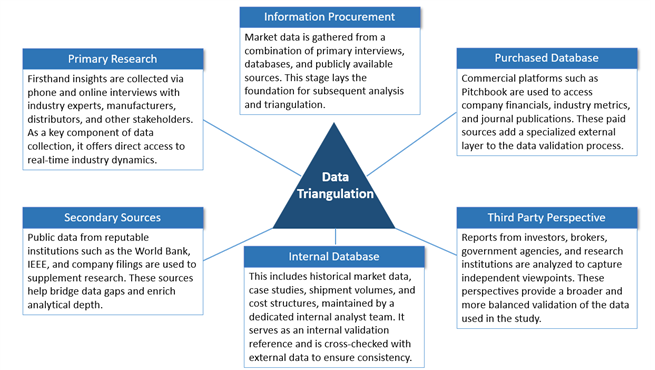Specialty gases mainly include high-purity gases, electronic gases, and standard gases. Electronic specialty gases (ESG) are an important branch of specialty gases, referring to gases used in the production of semiconductors, flat-panel displays, and other electronic products. These gases play key roles in multiple steps of semiconductor manufacturing, including but not limited to cleaning, etching, deposition, doping, and photolithography. Because these processes require extremely high purity and precision of materials, electronic specialty gases must meet extremely high purity standards, usually 99.999% (5N) or higher.
Market Overview:
According to LookWhole Insight, the global Electronic Specialty Gases market is projected to reach USD 5592.15 Million in 2024. It is expected to grow to USD 11528.17 Million by 2033, registering a compound annual growth rate (CAGR) of 8.37% during the forecast period (2025–2033). - LookWhole Insight
From the perspective of market size for single gas products: in 2021, nitrogen trifluoride, tungsten hexafluoride, and hexafluorobutadiene ranked top three globally, with market sizes of USD 880 million, USD 335 million, and USD 311 million, respectively. The top ten gases accounted for 58% of the market, mainly used in deposition, cleaning, and etching.
Based on their chemical composition, electronic specialty gases can be categorized as fluorine-containing gases, silicon-containing gases, boron-containing gases, germanium-containing gases, and hydride gases:
|
Classification |
Major Types |
|
Fluorides Series |
Hydrogen fluoride (HF), Fluorine (F₂), Nitrogen trifluoride (NF₃), Sulfur hexafluoride (SF₆), Carbonyl fluoride (COF₂), Chlorine trifluoride (ClF₃), Xenon trifluoride (XeF₃), Tungsten hexafluoride (WF₆), Molybdenum hexafluoride (MoF₆), Tellurium hexafluoride (TeF₆), Phosphorus trifluoride (PF₃), Arsenic trifluoride (AsF₃), Arsenic pentafluoride (AsF₅), Methyl fluoride (CH₃F), Difluoromethane (CH₂F₂), Trifluoromethane (CHF₃), Carbon tetrafluoride (CF₄), Pentafluoroethane (C₂HF₅), Hexafluoroethane (C₂F₆), Octafluoropropane (C₃F₈), Hexafluorobutadiene (C₄F₆), Octafluorocyclobutane (C₄F₈), Heptafluorocyclopentene (C₅HF₇), Octafluorocyclopentene (C₅F₈) |
|
Silicides Series |
Silane (SiH₄), Disilane (Si₂H₆), Trisilane (Si₃H₈), Dichlorosilane (SiH₂Cl₂), Trichlorosilane (SiHCl₃), Tetrachlorosilane (SiCl₄), Hexachlorodisilane (Si₂Cl₆), Silicon tetrafluoride (SiF₄), Trimethylsilane (SiH(CH₃)₃), Tetramethylsilane (Si(CH₃)₄) |
|
Borides Series |
Boron trifluoride (BF₃), Boron trichloride (BCl₃), Boron tribromide (BBr₃), Diborane (B₂H₆), Trimethylborane (B(CH₃)₃), Triethylborane (B(C₂H₅)₃) |
|
Germanides Series |
Germane (GeH₄), Digermane (Ge₂H₆), Trimethylgermane (GeH(CH₃)₃), Tetramethylgermane (Ge(CH₃)₄), Germanium tetrafluoride (GeF₄), Germanium tetrachloride (GeCl₄) |
|
Hydrides Series |
Phosphine (PH₃), Arsine (AsH₃), Hydrogen sulfide (H₂S), Hydrogen selenide (H₂Se), Stibine (SbH₃), Stannane (SnH₄) |
|
Others |
Chlorine (Cl₂), Hydrogen chloride (HCl), Hydrogen bromide (HBr), Carbonyl sulfide (COS), Nitrogen dioxide (NO₂), Ammonia (NH₃), Carbon dioxide (CO₂), Carbon monoxide (CO), Xenon (Xe), Neon (Ne), Krypton (Kr), Propylene (C₃H₆), Methane (CH₄), Ethylene (C₂H₄), Propane (C₃H₈) |
At present, there are 114 types of specialty gases used in various stages of the semiconductor industry, with 44 commonly used types. They mainly include nitrogen trifluoride, tungsten hexafluoride, hexafluorobutadiene, ammonia, etc., generally produced in liquid or bottled gas form.
According to different compositions and uses, electronic specialty gases can be roughly divided into seven categories: gases for doping, epitaxial crystal growth gases, ion implantation gases, etching gases, chemical vapor deposition (CVD) gases, balance/reaction gases, and doping formulation gases. Some specialty gases are used in multiple stages (e.g., silane).
Based on their chemical composition, electronic gases (including bulk and specialty gases) can be categorized into over ten categories, including dopant gases, plasma etching gases, and chemical vapor deposition gases:
|
Category |
Main Types |
|
Doping Gases |
Arsine (AsH3), Phosphine (PH3), Germane (GeH4), Diborane (B2H6), Arsenic Trichloride (AsCl3), Arsenic Trifluoride (AsF3), Hydrogen Sulfide (H2S), Boron Trifluoride (BF3), Boron Trichloride (BCl3), Hydrogen Selenide (H2Se), Stibine (SbH3), Dimethyl Telluride ((CH3)2Te), Dimethyl Cadmium ((CH3)2Cd), Diethyl Cadmium ((C2H5)2Cd), Phosphorus Trichloride (PCl3), Diethyl Telluride ((C2H5)2Te) |
|
Crystal Growth Gases |
Silane (SiH4), Dichlorosilane (SiH2Cl2), Trichlorosilane (SiHCl3), Tetrachlorosilane (SiCl4), Diborane (B2H6), Boron Tribromide (BBr3), Boron Trichloride (BCl3), Arsine (AsH3), Phosphine (PH3), Germane (GeH4), Hydrogen Telluride (TeH2), Triethylaluminum ((C2H5)3Al), Trimethylarsine ((CH3)3As), Triethylarsine ((C2H5)3As), Dimethylmercury ((CH3)2Hg), Trimethylphosphine ((CH3)3P), Triethylphosphine ((C2H5)3P), Tin Tetrachloride (SnCl4), Germanium Tetrachloride (GeCl4), Antimony Pentachloride (SbCl5), Aluminum Chloride (AlCl3), Argon (Ar), Helium (He), Hydrogen (H2) |
|
Gas-Phase Etching Gases |
Chlorine (Cl2), Hydrogen Chloride (HCl), Hydrogen Fluoride (HF), Hydrogen Bromide (HBr), Sulfur Hexafluoride (SF6) |
|
Plasma Etching Gases |
Silane (SiH4), Carbon Tetrafluoride (CF4), Octafluoropropane (C3F8), Trifluoromethane (CHF3), Hexafluoroethane (C2F6), Trifluorochloromethane (CClF3), Oxygen (O2), Pentafluorochloroethane (C2ClF5), Nitrogen Trifluoride (NF3), Sulfur Hexafluoride (SF6), Boron Trichloride (BCl3), Dichlorofluoromethane (CHFCl2), Nitrogen (N2), Helium (He), Argon (Ar) |
|
Ion Beam Etching Gases |
Octafluoropropane (C3F8), Trifluoromethane (CHF3), Trifluorochloromethane (CClF3), Carbon Tetrafluoride (CF4) |
|
Ion Implantation Gases |
Arsenic Trifluoride (AsF3), Phosphorus Trifluoride (PF3), Phosphine (PH3), Boron Trifluoride (BF3), Boron Trichloride (BCl3), Silicon Tetrafluoride (SiF4), Sulfur Hexafluoride (SF6), Hydrogen (H2), Nitrogen (N2) |
|
Chemical Vapor Deposition (CVD) Gases |
Silane (SiH4), Dichlorosilane (SiH2Cl2), Tetrachlorosilane (SiCl4), Ammonia (NH3), Nitric Oxide (NO), Oxygen (O2) |
|
Carrier/Dilution Gases |
Nitrogen (N2), Argon (Ar), Helium (He), Hydrogen (H2), Carbon Dioxide (CO2), Nitrous Oxide (N2O), Oxygen (O2) |
|
Epitaxy Gases |
Silane (SiH4), Dichlorosilane (SiH2Cl2), Tetrachlorosilane (SiCl4), Disilane (Si2H6), Hydrogen Chloride (HCl), Phosphine (PH3), Arsine (AsH3), Diborane (B2H6), Helium (He), Hydrogen (H2), Nitrogen (N2), Argon (Ar) |
The upstream of the electronic specialty gas industry chain includes raw materials and equipment supply, mainly air, industrial exhaust gases, liquid oxygen, liquid nitrogen, and other raw materials, as well as gas separation equipment, pressure vessel equipment, gas purification equipment, gas compression equipment, etc. Electronic specialty gases are widely used in semiconductors, microelectronics, and related high-tech industries such as solar cells, either for thin-film deposition, etching, doping, passivation, cleaning, or as carrier gases and protective atmospheres. In recent years, thanks to the accelerated development of the semiconductor industry, the global electronic specialty gas market has shown a continuous growth trend.
Electronic Specialty Gases Are the Second Largest Consumable in Integrated Circuits
According to the North American Semiconductor Association, electronic gases (including bulk electronic gases and electronic specialty gases) account for about 14% of chip manufacturing costs, making them the second-largest consumable in semiconductor manufacturing. Wafer materials, electronic gases, masks, and photoresists account for 31%, 14%, 14%, and 6% of costs, respectively.
Semiconductor manufacturing involves thousands of processes with extreme complexity, requiring the use of hundreds of electronic specialty gases. As essential supporting materials for industries such as integrated circuits and display panels, electronic specialty gases are widely used in cleaning, film deposition, photolithography, etching, doping, and other processes.
Gases such as tungsten hexafluoride are used in film deposition processes to deposit thin films:
Fluorocarbon and halogen gases are used to remove photoresist from silicon wafers during the etching process:
Industry Barriers Analysis
Key Development Trends
Global Electronic Specialty Gases Market: Competitive Landscape
The 4 major players in the gas industry include Air Products (US), Linde (Germany), Air Liquide (France), and Taiyo Nippon Sanso (now Nippon Sanso Holdings), which together control approximately 50% of the global market share. These companies have established significant market influence and competitiveness through extensive global production and supply networks.
Currently, players at all levels are increasing their R&D efforts and gradually transitioning from simply providing products to becoming comprehensive service providers. As customers increasingly recognize suppliers' capabilities, they can offer the following services: Phase 1: Providing a single gas product; Phase 2: Providing diversified and customized gas products, delivered locally; Phase 3: Providing comprehensive, professional value-added services such as gas packaging handling, testing, and repair, and the construction and maintenance of gas supply systems and clean pipelines, forming a TGM (Total Gas Management) business, forging deep, long-term ties between supply and demand; Phase 4: Semiconductor customers and material suppliers jointly developing new materials required for new processes and jointly defining future product and technology roadmaps.
Report Framework and Key Highlights:
Market Dynamics: Identification of major market drivers, restraints, opportunities, and challenges.
Trend Analysis: Examination of ongoing and emerging trends impacting the market.
Competitive Landscape: Detailed profiles and market positioning of major players, including market share, operational status, product offerings, and strategic developments.
Strategic Analysis Tools: SWOT Analysis, Porter’s Five Forces Analysis, PEST Analysis, Value Chain Analysis
Market Segmentation: By type, application, region, and end-user industry.
Forecasting and Growth Projections: In-depth revenue forecasts and CAGR analysis through 2033.
This report equips readers with critical insights to navigate competitive dynamics and develop effective strategies. Whether assessing a new market entry or refining existing strategies, the report serves as a valuable tool for:
Industry players
Investors
Researchers
Consultants
Business strategists
And all stakeholders with an interest or investment in the Electronic Specialty Gases market.
Global Electronic Specialty Gases Market: Segmentation Analysis and Strategic Insights
This section of the report provides an in-depth segmentation analysis of the global Electronic Specialty Gases market. The market is segmented based on region (country), manufacturer, product type, and application. Segmentation enables a more precise understanding of market dynamics and facilitates targeted strategies across product development, marketing, and sales.
By breaking the market into meaningful subsets, stakeholders can better tailor their offerings to the specific needs of each segment—enhancing competitiveness and improving return on investment.
Global Electronic Specialty Gases Market: Market Segmentation Analysis
The research report includes specific segments by region (country), manufacturers, Type, and Application. Market segmentation creates subsets of a market based on product type, end-user or application, Geographic, and other factors. By understanding the market segments, the decision-maker can leverage this targeting in the product, sales, and marketing strategies. Market segments can power your product development cycles by informing how you create product offerings for different segments.
|
ATTRIBUTE |
Details |
|
|
Time Coverage |
Historical Year: 2020– 2024 Base Year: 2024 Estimated Year: 2025 Forecast Year: 2025 - 2033 |
|
|
Market Segmentation |
||
|
By Type |
Fluorides Series Silicides Series Borides Series Germanides Series Hydrides Series Others |
|
|
By Application |
Doping Crystal Growth Gas-Phase Etching Plasma Etching Ion Beam Etching Ion Implantation Chemical Vapor Deposition (CVD) Carrier/Dilution Epitaxy Others |
|
|
By Company |
Air Products and Chemicals Linde plc Air Liquide Taiyo Nippon Sanso Corporation Messer Group Norco Inc. ILMO Products Company MESA Mitsui Chemicals Nova Gas Technologies Merck Samatorgas Showa Denko SK Group Yingde Gases Nanda Photoelectric Co., Ltd. CSSC Special Gas Co., Ltd. Wutai Gas Co., Ltd. Wuhua Technology Co., Ltd. Yake Technology Co., Ltd. Jinhong Gas Co., Ltd. Shaanxi Blower (Group) Co., Ltd. Qiaoyuan Gas Co., Ltd. Hangyang Co., Ltd. Camet Gas Co., Ltd. Zhejiang Juhua Co., Ltd. |
|
|
By Region |
North
America |
|
Report Framework and Chapter Summary
Chapter 1: Report Scope and Market Definition
This chapter outlines the statistical boundaries and scope of the report. It defines the segmentation standards used throughout the study, including criteria for dividing the market by region, product type, application, and other relevant dimensions. It establishes the foundational definitions and classifications that guide the rest of the analysis.
Chapter 2: Executive Summary
This chapter presents a concise summary of the market’s current status and future outlook across different segments—by geography, product type, and application. It includes key metrics such as market size, growth trends, and development potential for each segment. The chapter offers a high-level overview of the Electronic Specialty Gases Market, highlighting its evolution over the short, medium, and long term.
Chapter 3: Market Dynamics and Policy Environment
This chapter explores the latest developments in the market, identifying key growth drivers, restraints, challenges, and risks faced by industry participants. It also includes an analysis of the policy and regulatory landscape affecting the market, providing insight into how external factors may shape future performance.
Chapter 4: Competitive Landscape
This chapter provides a detailed assessment of the market's competitive environment. It covers market share, production capacity, output, pricing trends, and strategic developments such as mergers, acquisitions, and expansion plans of leading players. This analysis offers a comprehensive view of the positioning and performance of top competitors.
Chapters 5–10: Regional Market Analysis
These chapters offer in-depth, quantitative evaluations of market size and growth potential across major regions and countries. Each chapter assesses regional consumption patterns, market dynamics, development prospects, and available capacity. The analysis helps readers understand geographical differences and opportunities in global markets.
Chapter 11: Market Segmentation by Product Type
This chapter examines the market based on product type, analyzing the size, growth trends, and potential of each segment. It helps stakeholders identify underexplored or high-potential product categories—often referred to as “blue ocean” opportunities.
Chapter 12: Market Segmentation by Application
This chapter analyzes the market based on application fields, providing insights into the scale and future development of each application segment. It supports readers in identifying high-growth areas across downstream markets.
Chapter 13: Company Profiles
This chapter presents comprehensive profiles of leading companies operating in the market. For each company, it details sales revenue, volume, pricing, gross profit margin, market share, product offerings, and recent strategic developments. This section offers valuable insight into corporate performance and strategy.
Chapter 14: Industry Chain and Value Chain Analysis
This chapter explores the full industry chain, from upstream raw material suppliers to downstream application sectors. It includes a value chain analysis that highlights the interconnections and dependencies across various parts of the ecosystem.
Chapter 15: Key Findings and Conclusions
The final chapter summarizes the main takeaways from the report, presenting the core conclusions, strategic recommendations, and implications for stakeholders. It encapsulates the insights drawn from all previous chapters.
About US
LookWhole Insight is a global leader in data analytics and market research, offering deep insights into industries, economies, and consumer behavior across the world. We deliver comprehensive data and analysis on thousands of products and services, making us the first choice for organizations pursuing growth and exploring untapped, blue ocean markets.
Our offerings include syndicated research reports, customized research solutions, and strategic consulting services. The LookWhole Insight database is trusted by prestigious academic institutions and Fortune 500 companies alike, providing a robust foundation to navigate both global and regional business environments. Our data spans 26 industries across 35 key economies, backed by thousands of metrics and detailed analyses.
As an independent provider of global business intelligence, we empower clients with market analysis and consumer insights that range from local to global, and from tactical to strategic. Our research solutions guide critical decisions on when, where, and how to scale your business with confidence.
Email: market@lookwhole.com
www.lookwholeinsight.com






